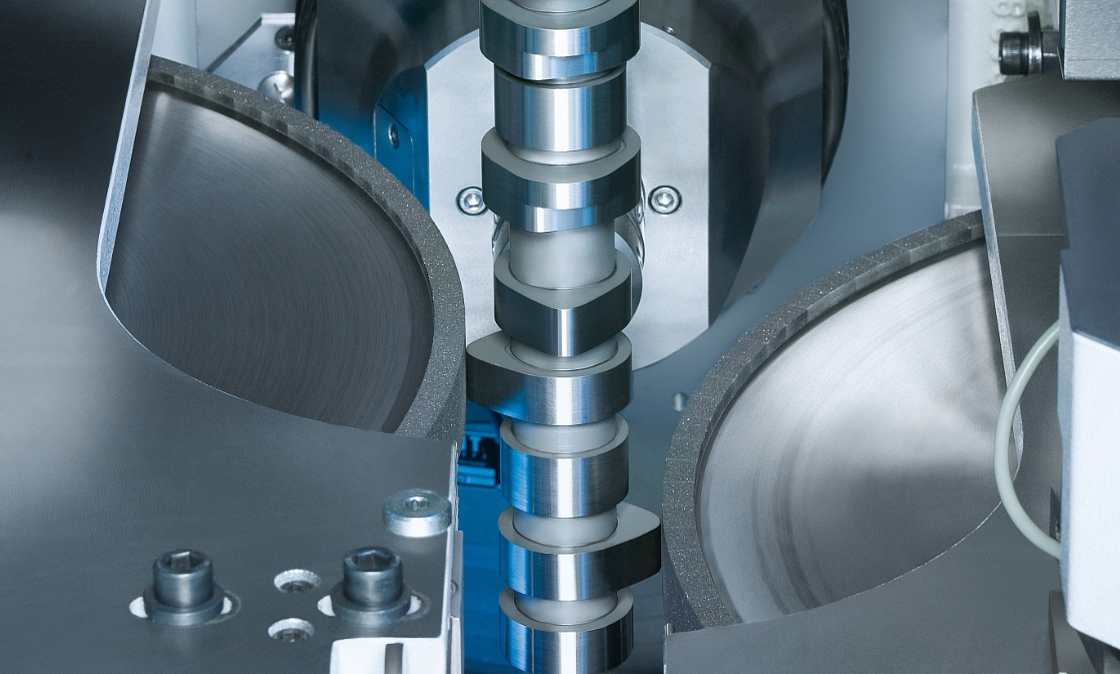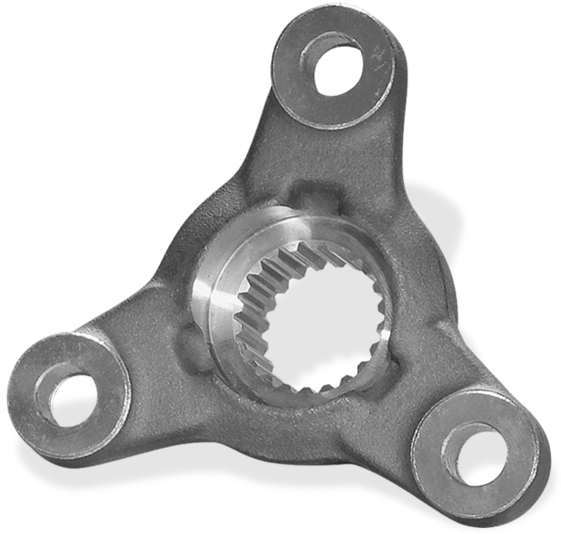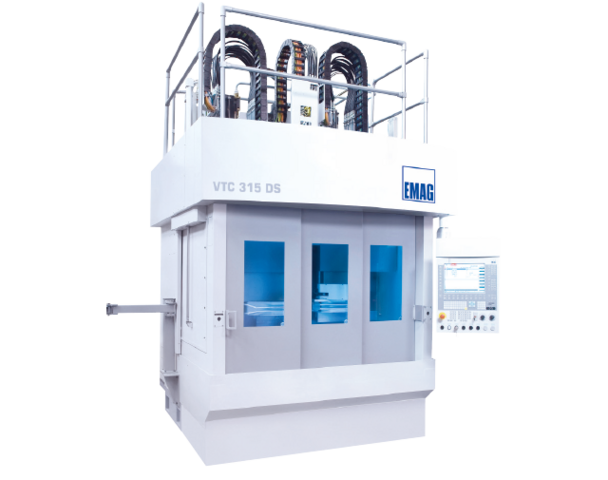Synchronous Support Grinding
The synchronous support grinding process on the VTC 315 DS uses two CBN grinding wheels to simultaneously grind – from opposite sides – vertically clamped shaft-type components supported by a trailing steady.
To achieve this, two independently moveable compound slides with X- and Z-axis and featuring integral grinding spindles, are mounted to the inside wall of the machine.
Low forces acting on the component
This process allows simultaneous grinding of the component from right and left, which almost halves the time it takes to grind with one CBN wheel and leads to an improvement in component quality, i.e. in surface finish, concentricity and roundness.
The construction not only allows excellent access to all vital components but also has an advantage over 2-axis horizontal grinders: it absorbs the forces generated.
Advantages Synchronous Support Grinding
In conventional grinding it is the normal forces that have the greatest impact on the workpiece, and they are usually three or four times that of the tangential forces. With simultaneous grinding the normal forces are cancelled out by the two grinding wheels being arranged opposite each other. As the wheels also run in opposing directions, the torque created by the tangential forces is also cancelled out. However, in the case of very slender or not very stable shafts being ground the conventional way, the resulting tangential forces can still cause deformation.
For the machining of these shafts the synchronous support grinding process developed by EMAG is ideal, as it includes the use of a steady that is positioned against the seat, and which advances in synch with the grinding wheels until the desired shaft dimension is ground – a design that also absorbs all the tangential forces.
Workpieces
The Right Manufacturing Solution for Every Workpiece
Machines for your requirements
(1) machines found






